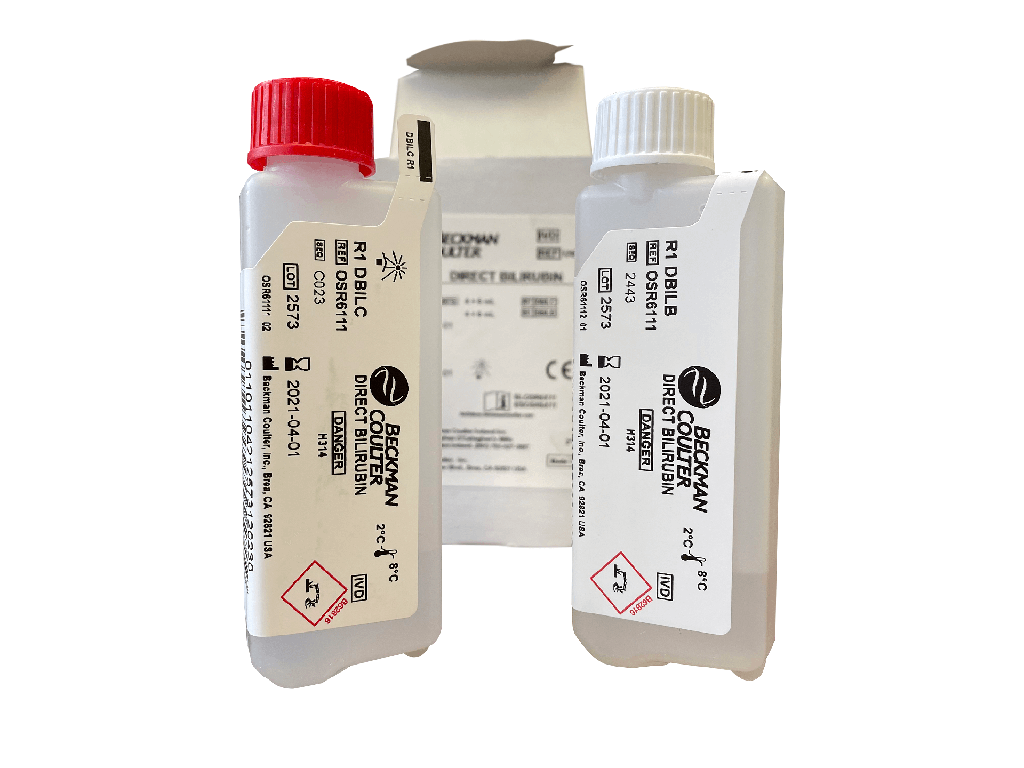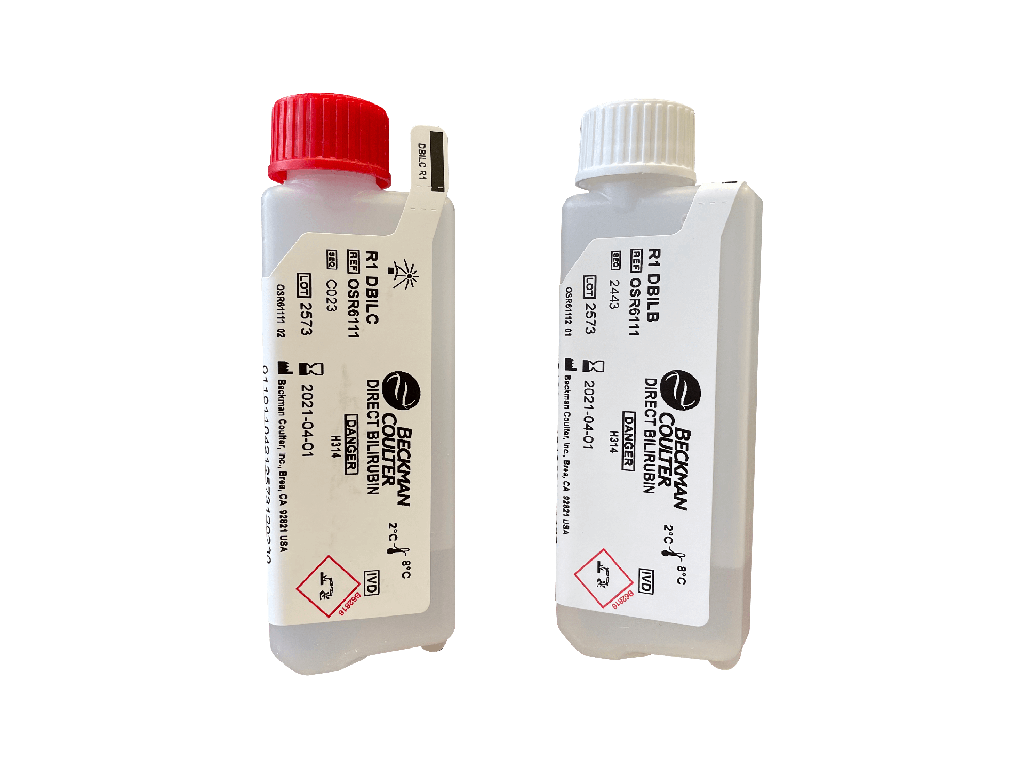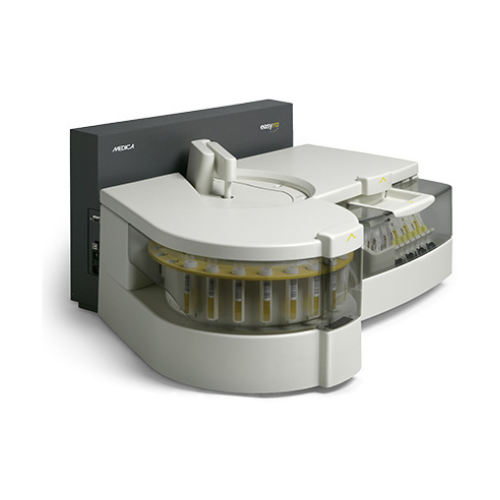For Business Use Only. Does Not Ship to Residential Addresses. For use inside an Analyzer, Sold Separately.
OSR6199 Olympus High-Sensitivity C-Reactive Protein (hsCRP) Reagent, 4 x 360 Tests
Product Code: OSR6199
Shipping Weight: 10.00lbs (4.54kg)
Specifications
Manufacturer: Beckman Coulter
Country of Origin: Japan
Application: Reagent
Number of Tests: 4 X 360 Tests
Test Method: Latex-enhanced Immunoturbidimetric Method
Test Name: High-Sensitivity C-Reactive Protein (hsCRP)
Test Type: Cardiac / Immunoassay
UNSPSC Code: 41116004
Intended Use
System reagent for the quantitative determination of C-Reactive Protein in human serum and plasma on Beckman Coulter AU Analyzers. Measurement of CRP is useful for the detection and evaluation of infection, tissue injury, inflammatory disorders and associated diseases. Measurements may also be useful as an aid in the identification of individuals at risk for future cardiovascular disease. High sensitivity CRP (hsCRP) measurements, when used in conjunction with traditional clinical laboratory evaluation of acute coronary syndromes, may be useful as an independent marker of prognosis for recurrent events, in patients with stable coronary disease or acute coronary syndromes.
About C-reactive protein
C-reactive protein (CRP) is one of the most sensitive acute-phase reactants. With the Beckman Coulter AU System CRP Latex reagent, CRP can be measured down to very low concentrations. Depending on the application used (different instrument settings) two measuring ranges are available:
1. Normal Application (1.0 - 480 mg/L): C-reactive protein levels in serum can rise dramatically after myocardial infarction, stress, trauma, infection, inflammation, surgery, or neoplastic proliferation. The increase occurs within 24 to 48 hours, and the level may be 2000 times normal. Because the increase is non-specific, however, it cannot be interpreted without a complete clinical history, and even then only by comparison with previous values.
2. Highly Sensitive (Cardiac / Neonatal) Application – Beckman Coulter AU400/400e/480, AU600/640/640e/680 (0.2 - 160 mg/L), AU2700/5400(0.2 – 80 mg/L):
Studies have also shown that the detection of much lower CRP levels can provide valuable information. The typical CRP concentration for healthy adults is (depending on the specific level of the individual patient) < 1 mg/L. Slightly higher values can indicate an increased risk for coronary heart disease in asymptomatic patients. CRP concentrations above 3 mg/L, at the time of hospital admission, predict a precarious outcome after a myocardial infarct. The following relative risk categories in relation to average CRP level have been recommended: Low < 1mg/L, Average 1.0 to 3.0 mg/L and High > 3.0 mg/L. Increases in C-Reactive Protein values are not specific and should not be interpreted without a complete clinical history since CRP is an acute phase protein which can rise non-specifically due to other inflammatory conditions. For cardiac risk analysis, other cardiac disease-specific testing must be done, such as Total cholesterol, HDL cholesterol, and LDL cholesterol. When being used for risk assessment, levels of CRP > 10 mg/L should be evaluated for other non-cardiovascular origins. Testing for any risk assessment should not be performed while there is indication of infection, systemic inflammation, or trauma. This assay is not meant for management of acute coronary syndrome and is not a substitute for traditional cardiovascular risk factors. Screening the entire adult population for hsCRP is not recommended. The average of hsCRP levels determined two weeks apart should be used in performing risk assessment on metabolically stable patients. hsCRP is considered to be a Class IIa marker for acute coronary syndrome in addition to Troponin I.
Cord blood normally has very low CRP concentrations (median 0.12 mg/L). In the diagnostic evaluation of neonates with suspected infection, measurements of serial CRP levels are useful. Two low CRP levels obtained 24 hours apart indicate that bacterial infection is highly unlikely. Thus, CRP Latex reagent is a valuable tool for the early diagnosis of infection in preterm infants and neonates. It assesses both the need for, and the effectiveness of, antibiotic treatment. However, CRP values alone should not be used as a basis for early discontinuance of antibiotic therapy.
Methodology
Immune complexes formed in solution scatter light in proportion to their size, shape, and concentration. Turbidimeters measure the reduction of incidence light due to reflection, absorption, or scatter. In this procedure, the measurement of the rate of decrease in light intensity transmitted (increase in absorbance) through particles suspended in solution is the result of complexes formed during the immunological reaction between the CRP of the patient serum and rabbit anti-CRP-antibodies coated on latex particles.
Additional Information
High-Sensitivity C-Reactive Protein Reagent - Safety Data Sheet
High-Sensitivity C-Reactive Protein Reagent - Instructions for Use





















